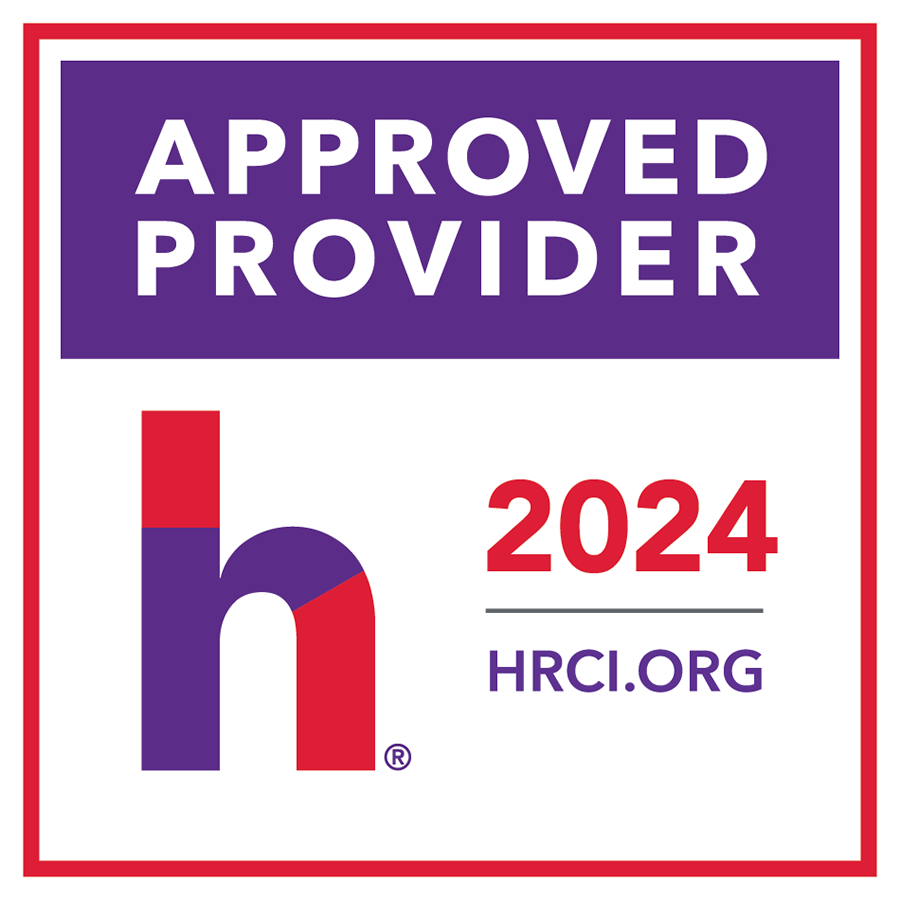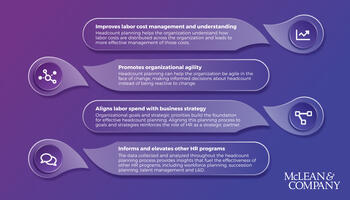- Organizations struggle to implement a strategic workforce plan. While headcount planning is a process most organizations are comfortable with, workforce planning is a more complex undertaking that involves more people, more quantitative and qualitative data, and longer planning horizons.
- A lack of suitable data and internal expertise on designing and applying workforce planning means that many organizations apply it infrequently, improperly, or not at all.
Need Extra Help?
Speak With An Analyst.
- Get on-demand project support
- Get advice, coaching, and insight at key project milestones
- Go through a Guided Implementation to help you get through your project

Our Advice
Critical Insight
- It is common practice to continually reassess customers, markets, and products in today’s VUCA environment, but there is often no parallel assessment of workforce composition. Leaders need to be planful and develop a workforce planning strategy that positions their organization to take advantage of change rather than fall victim to it.
Impact and Result
- Start the workforce planning journey by designing the process and planning for the different people and analyses that will be involved.
- Implement a clear and straightforward workforce planning process aligned with organizational capabilities and maturity to make workforce planning achievable and attain the benefits of this strategic planning process.

Workforce Planning

This program has been approved for continuing professional development (CPD) hours under Section A of the Continuing Professional Development (CPD) Log of the Human Resource Professionals Association (HRPA).

McLean & Company is recognized by SHRM and can award Professional Development Credits (PDCs) for the SHRM-CP® or SHRM-SCP®.

HR Certification Institute's® (HRCI®) official seal confirms that McLean & Company meets the criteria for pre-approved recertification credit(s) for any of HRCI’s eight credentials, including SPHR® and PHR®.
How to complete this course:
Use these videos, along with the Project Blueprint deck above, to gain an understanding of the subject. Start with the Introduction, then move through each of the Course Modules. At the end of each Module, you will be required to complete a short test to demonstrate your understanding. You will complete this course when you have completed all of the course tests.
- Number of Course Modules: 5
- Estimated Completion Time: 1.5 hrs
Learning Outcome
Create a workforce planning process that is aligned with organizational needs and capabilities.
Learning Objectives
By the end of this course, learners will be able to:
- Determine their approach to workforce planning by setting goals, project scope, and inventorying their resources and relevant data.
- Establish a plan for collaborating with functional leaders to effectively identify requirements for the workforce, such as skills, competencies, roles, locations, demographics, functions, and structure.
- Design a forecast framework to understand their workforce supply, demand, and gaps.
- Understand strategies to address workforce needs and prepare to implement the workforce planning process.
Course Modules

Design and Build a Strategic Workforce Planning Toolkit - Introduction: Create a workforce planning toolkit that will ensure the right talent is available when and where it is needed

Design and Build a Strategic Workforce Planning Toolkit - Module 1: Determine your approach to workforce planning

Design and Build a Strategic Workforce Planning Toolkit - Module 2: Establish a plan for collaborating with functional leaders

Design and Build a Strategic Workforce Planning Toolkit - Module 3: Design your forecast framework to understand workforce supply, demand, and gaps

Design and Build a Strategic Workforce Planning Toolkit - Module 4: Understand strategies to address workforce needs and prepare to implement the workforce planning process
Design and Build a Strategic Workforce Planning Toolkit
Create a strategic workforce plan that will ensure the right talent is available when and where it is needed
Executive Summary
McLean & Company Insight
It is common practice to continually reassess customers, markets, and products in today’s VUCA environment, but there is often no parallel assessment of workforce composition. Leaders need to be planful and develop a strategy that positions their organization to take advantage of change rather than fall victim to it.
|
Situation |
|
|---|---|
|
Complication |
|
|
Solution |
|
Operating environments are increasingly in flux, and the nature of work is rapidly changing
In today’s volatile, uncertain, complex, and ambiguous (VUCA) world, it can be hard for organizations to keep up. With organizational disruption, shifting talent requirements, and changing workforce demographics, it’s more critical than ever to develop a plan for how to meet the organization’s future talent needs.
|
Organizational disruption |
Shifting talent requirements |
Changing workforce demographics |
|---|---|---|
|
80% of executives expect changes to organizational operations or value creation, which will further impact the skills needed in the future (PwC, 2021). 62% of surveyed dealmakers expect the number of mergers and acquisitions to somewhat or significantly increase in the coming years (Intralinks, 2023). |
Employers estimate 44% of employees’ skills will be disrupted in the next five years as core skills shift to reflect the importance of complex problem solving and technology literacy (World Economic Forum, 2023). 80% of employees in the US could have at least 10% of their tasks automated by generative AI in the future, as the division of work between humans and algorithms changes (OpenAI, Open Research, and University of Pennsylvania, 2023). |
Workforce participation of older workers is increasing. By 2031, 1 in 4 employees is expected to be over the age of 55 (US Bureau of Labor Statistics, 2022). The number of young adults (aged 15-24) in the global workforce is decreasing. More than one-fifth of young adults are not currently participating in education, employment, or training, which limits future access to career opportunities (International Labour Organization, 2023). |
McLean & Company Insight
It is common practice to continually reassess customers, markets, and products in today’s VUCA environment, but there is often no parallel assessment of workforce composition. Leaders need to be planful and develop a strategy that positions their organization to take advantage of change rather than fall victim to it.

 Address the Talent Gap Driven by Generative AI
Address the Talent Gap Driven by Generative AI
 Develop an Effective Talent Retention Plan
Develop an Effective Talent Retention Plan
 Design and Build a Strategic Workforce Planning Toolkit
Design and Build a Strategic Workforce Planning Toolkit
 Identify Skills of the Future
Identify Skills of the Future
 Preparing for an Internal Talent Marketplace
Preparing for an Internal Talent Marketplace
 Headcount Planning Guide
Headcount Planning Guide
 HR Guide to Measuring Workload
HR Guide to Measuring Workload